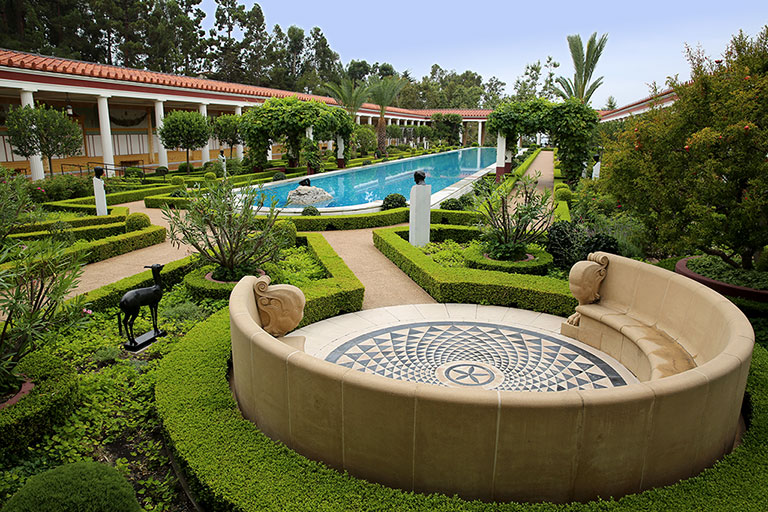See all Museums in Los Angeles
The Getty Villa Malibu
17985 Pacific Coast Highway Pacific Palisades, CA 90272 Phone: (310) 440-7300 www.getty.edu/About
After 8 years and $275 million in renovations, the magnificent Getty Villa is receiving guests again. As the Getty Center was the cultural coup of 1997, a ticket to the newly renovated Villa is still one of the most sought-after items in the city. This former residence of oil tycoon J. Paul Getty, built in 1974 on the edge of a Malibu bluff with dazzling views of the ocean, was modeled after a first-century Roman country house buried by the eruption of Mount Vesuvius in A.D. 79 -- the Villa dei Papiri in Herculaneum, Italy. In fact, as you enter the sun-filled inner courtyard, it's not hard to imagine toga-clad senators wandering the gardens where fountains and bronze busts occupy the same spots as the original villa. The museum's permanent collection of Greek, Roman, and Etruscan artifacts -- dating from 6500 B.C. to A.D. 400 -- consists of more than 1,200 works in 23 galleries arranged by theme, and five additional galleries for changing exhibitions. Exhibits on display range from everyday items such as coins, jewelry, and sculpture to modern interactive exhibits that illustrate key moments in the history of the ancient Mediterranean. Highlights include Statue of a Victorious Youth, a large-scale bronze discovered in an Adriatic shipwreck that is kept in a special climate-controlled room to preserve the metal (it's one of the few life-size Greek bronzes to have survived to modern times), as well as a beautiful 450-seat open-air theater where visitors are encouraged to take a break. And for keeping the kids entertained, the Villa's education team created a hands-on space called the Family Forum where children can partake in art-related activities. For a more enlightening museum experience, I strongly suggest you rent a $3 GettyGuide Audio Player, which features commentary from curators and conservators on over 150 works (it's available at the Pick-Up Desk on Floor 1). Admission to the Getty Villa is free but, unlike the Getty Center, advance tickets are required and can be obtained online or by phone.
